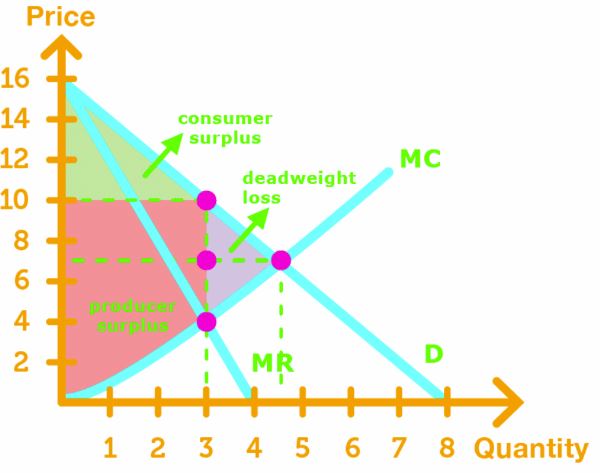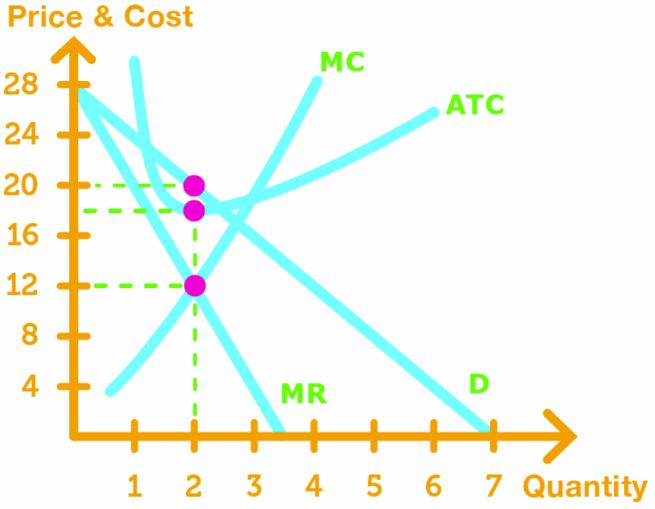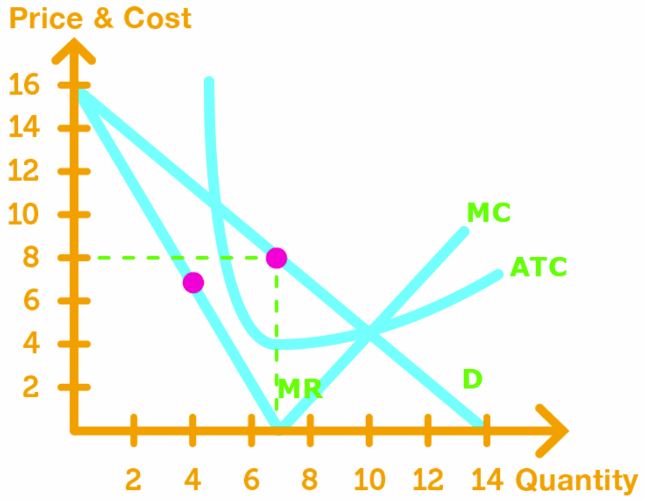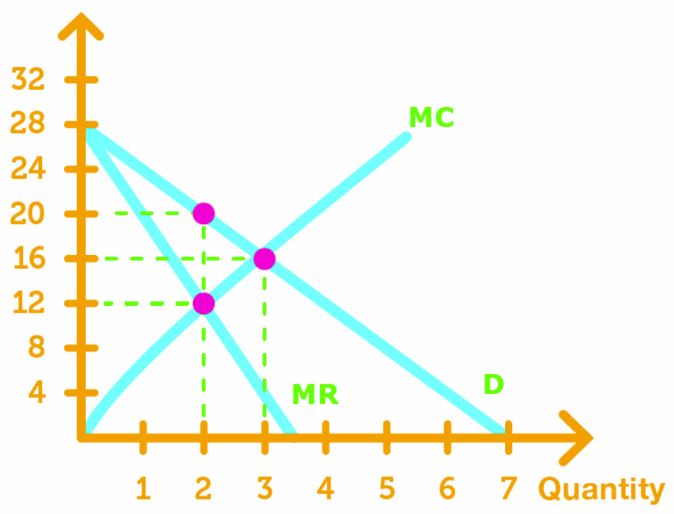Maximizing Profit with Total Revenue & Total Cost
Suppose we know the demand for the product, and the total cost of producing them. Then we can:
- Draw a table with the following columns: quantity, price, total revenue, total cost and profit.
- Calculate the total revenue ( p × q ).
- Calculate the profit (P = R - C ).
- Find the output with the highest attainable profit.
|
Price
(p)
|
Quantity demanded
(q)
|
Total Revenue
( R = p × q )
|
Total Cost
(C)
|
Profit
(P = R - C)
|
|
10 |
0 |
0 |
5 |
-5 |
|
9 |
1 |
9 |
7 |
2 |
|
8 |
2 |
16 |
10 |
6 |
|
7 |
3 |
21 |
14 |
7 |
|
6 |
4 |
24 |
19 |
5 |
|
5 |
5 |
25 |
25 |
0 |
In this case, the highest attainable profit when the output produced is 3, the price is $7.
If we graph total revenue and total cost in a graph, then the highest attainable profit will be the output in which TR and TC have the biggest gap.

Maximizing Profit with MR = MC
Just like in perfect competition, monopolist find the output q and price p that maximizes profit by solving for MR = MC.
To solve p and q graphically, we do the following:
- Graph the MR, MC, ATC, and demand Curve
- Find the intersection point of MR and MC to find output q
- Use output q to find price p on the demand curve.

To solve p and q graphically, we do the following:
- Define formulas for demand curve, MR and MC
- Set MR = MC and solve for output q
- Put output q into the demand formula and solve for p
To calculate economic profit, we find the average total cost ATC at the output q, and use the formula
Deadweight Loss in Single-Price Monopoly
Unlike perfect competition, monopolist is inefficient because it creates deadweight loss.
Monopolist produces the output that maximizes profit, but there is a shortage because consumers want more of the product.

Note 1: The deadweight loss and consumer surplus can be calculated by using the area of the triangle formula
Note 2: The producer surplus can be calculated by breaking apart the surplus into a triangle and square. Then calculate the areas of each to find the sum.









